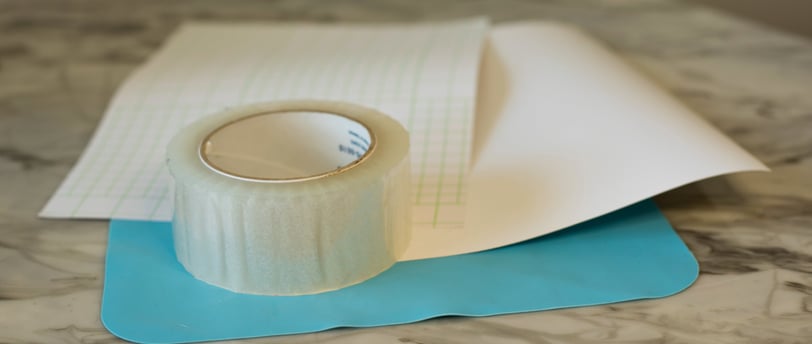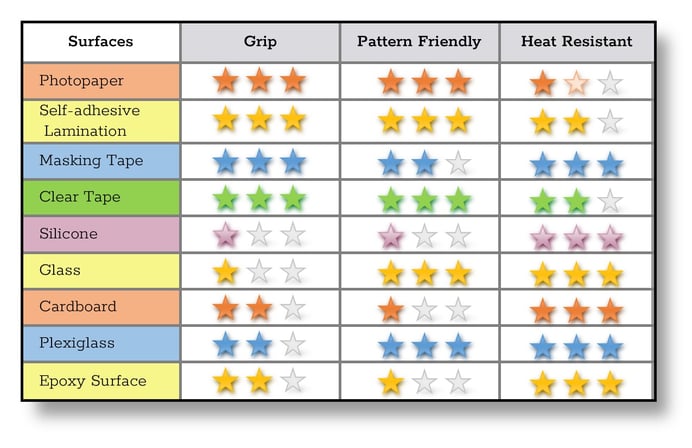3D Pen Work Surfaces
What type of work surface is best when using a 3D pen?
4/26/20233 min read


If you’re new to using 3D pens, you need to know that finding the right surface to draw on is crucial. A good surface can make the process smoother and more enjoyable, while a bad surface can lead to frustration. In this post, I’m going to share my experience with work surface options. I have been using various brands of PLA plastic and a SCRIB3D pen for your reference. It is also important to note that different brands, and temperatures will change the results of using different work surfaces, some experimenting will always be necessary when trying out new products.
My personal favorite option is to overlay Self-Adhesive Lamination Sheets on printed patterns. These sheets are durable and provide a smooth yet gripping surface for the 3D pen to work on. I have re-used patterns that I covered with this lamination many times and there was minimal warping from the heat. You will not be able to use unprotected paper, cardstock, or cardboard as the rough and absorbent surface can cause the filament to stick and tear the paper when you are ready to remove the project. Regular lamination is not heat-resistant so traditional lamination sheets can melt or warp when exposed to high temperatures from the 3D pen.
Another option that works great is using tape to protect paper or surfaces. This is a quick and easy solution for many applications. It may not look as sleek as a self-adhesive laminated sheet, but it has the same function. You can use packing tape or masking tape. Actually, any tape is fine, others just might not be transparent enough to see a pattern through. Masking tape is also functional to wrap around other objects to give you a 3D worksurface, then the tape can be removed and discarded.
Glossy photo paper can also be an option for 3D pen projects due to its smooth and shiny surface. You can print patterns directly on it. This is what I used before discovering how well self-adhesive lamination worked. However, when you pull off your finished design from the paper, there is a risk that some of the ink or toner will stick to the filament. If you're worried about the ink or toner transferring, it may be best to use a different type of surface. Another word of caution from my experience, when I filled in larger areas the paper stuck to my table and was difficult to wash off, so try to use an extra plain paper under the glossy paper.
Not all surfaces work equally well for 3D pens. For example, silicone mats may seem like a good option because they're non-stick and easy to clean, but in my experience, they're too slippery and don't provide enough friction for the filament to grip onto. If the filament cannot stay in place, it is incredibly frustrating and impossible to work with. They also may be too opaque to put over a pattern. There are tons of options to buy silicone matts specifically made for 3D pen work. I’ve tried three different brands, but I cannot recommend them.
While glass surfaces may seem like a good option for 3D pens because they're flat and clear, they may not provide enough grip for the pen to hold onto. A better alternative is plexiglass, which has a similar benefit as glass but also provides more grip for the filament to stick to. If the plexiglass does not provide enough grip you can rough it up with a little sand paper. Plexiglass is also shatter-resistant and lightweight, making it a great option. You can also place printed patterns underneath the plexiglass to work from.
If you're looking for an eco-friendly option and aren’t using a pattern, consider using a recycled cardboard box that has a glossy finished side. Cut the box open and use the smooth side as your drawing surface. This option is not only environmentally conscious, but also provides a great surface for your 3D pen.
In conclusion, there are many surfaces that work well for 3D pens. Some of the best options include Self-adhesive lamination sheets, tape over paper or surfaces, plexiglass, and recycled cardboard. Try out different surfaces to see what works best for you and your 3D pen. Report your findings in the comments below.


